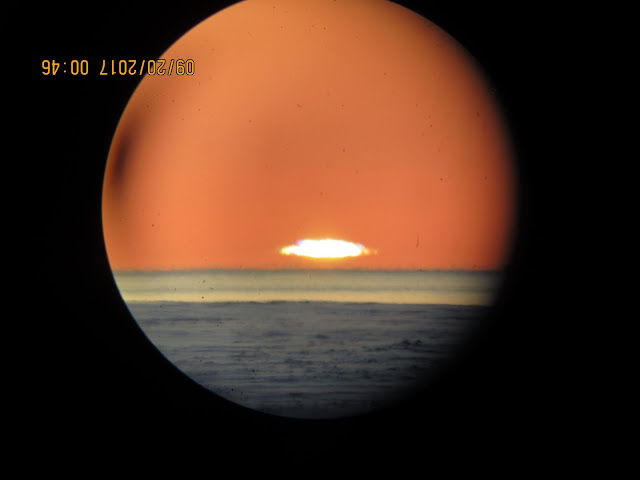~ CAA had short term very warm atmosphere, remnants of this warming exists but fall as snowflakes.
~Deeply cold but regionally small CTNP's are unstable by the mere presence of moderate cyclones.
600 mb temperature charts of November 20-24 December 2- 3 2017, NOAA daily composites. They depict an astounding warming of the CAA atmosphere peaking on about November 24., note how fast it went from coldest to hardly an existing cold cell. 600 mb temperatures are very close to the Density Weighted Temperature of the entire troposphere. Even more fascinating, even when expected, was the return on December 3 of Canadian Arctic Archipelago to coldest DWT, again it is the Cold Temperature North Pole. How do we explain this? It is complex because land skin temperatures vary from snow coverage not uniform at all everywhere. The quick warming of the CAA demonstrated its canopy of mixed conditions, with likely not so much snow on the ground, the top permafrost and snow cover warmed rapidly. When the Mega blizzard advection event ceased, it snowed a lot more than previous recent weeks, this covered the warmed top landscape slowing the cooling. But cooling did occur nevertheless, by radiative cooling of top of snow and slowed sublimation, because of fresh flaky snow fall relative humidity remained high diminishing the sublimation rate.
But the atmosphere cooled faster aloft, mainly oblivious to low clouds, in other words,
the clouds cut off heat to the upper mid atmosphere, enabling its rapid cooling. Which inevitably exacerbated the cloudiness and extra snow precipitation, by stronger convection of lower warmer atmosphere.
Even though the Northern Hemisphere had one coldest cell over Eastern Siberia (November 24) and the warming event was about 10 days long, the Jet Stream didn't change that much in position, because 10 days is apparently not enough to cause major Jet Stream deviations causing disruptive weather or Global Circulation changes.
Now is the time when little covered or bare Arctic lands start the mega-cooling process, excess snow cover cooled some Arctic autumn locations, this insulation carpet now changes roles to save the Arctic from extreme deeper freezing. Areas with very little snow cover will now on start to change the nature of CTNP's, from 2 current strong ones to a third or fourth smaller ones. We look for them around the Urals and Alaska. Meanwhile CAA cooling along with NE Siberia will undulate the Jet Stream worldwide WD December 6 2017






















